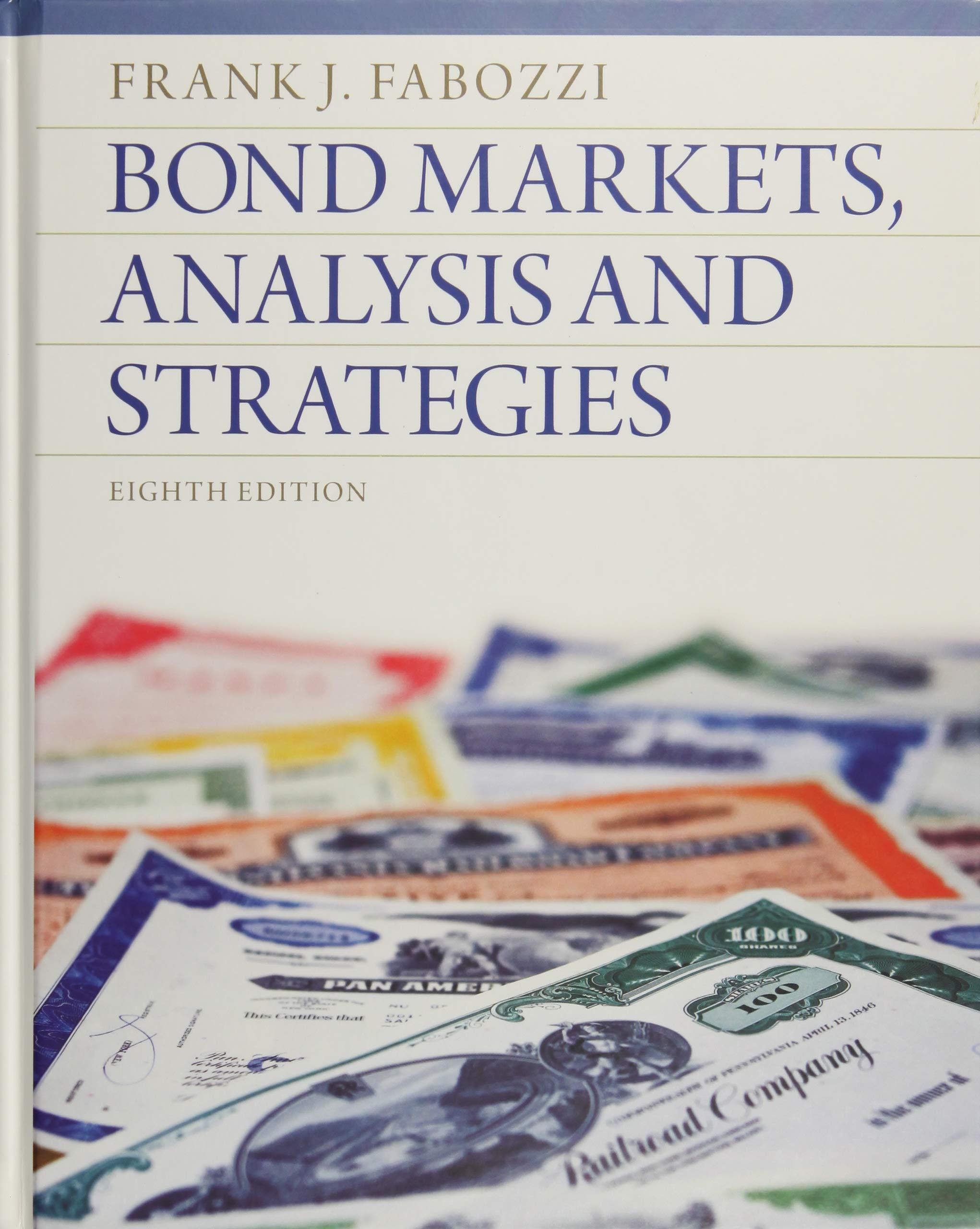One of your clients, a newcomer to the life insurance business, questioned you about the following excerpt
Question:
One of your clients, a newcomer to the life insurance business, questioned you about the following excerpt from Peter E. Christensen, Frank J. Fabozzi, and Anthony LoFaso, “Dedicated Bond Portfolios,” Chapter 43 in Frank J. Fabozzi (ed.), The Handbook of Fixed Income Securities
(Homewood, IL: Richard D. Irwin, 1991):
For financial intermediaries such as banks and insurance companies, there is a wellrecognized need for a complete funding perspective. This need is best illustrated by the significant interest-rate risk assumed by many insurance carriers in the early years of their Guaranteed Investment Contract (GIC) products. A large volume of compound interest (zero coupon) and simple interest (annual pay) GICs were issued in three- through seven-year maturities in the positively sloped yield-curve environment of the mid-1970s. Proceeds from hundreds of the GIC issues were reinvested at higher rates in the longer 10- to 30-year private placement, commercial mortgage, and public bond instruments. At the time, industry expectations were that the GIC product would be very profitable because of the large positive spread between the higher
“earned” rate on the longer assets and the lower “credited” rate on the GIC contracts.
By pricing GICs on a spread basis and investing the proceeds on a mismatched basis, companies gave little consideration to the rollover risk they were assuming in volatile markets. As rates rose dramatically in the late 1970s and early 1980s, carriers were exposed to disintermediation as GIC liabilities matured and the corresponding assets had 20 years remaining to maturity and were valued at only a fraction of their original cost.
Answer the following questions posed to you by your client.
a. “It is not clear to me what risk an issuer of a GIC is facing. A carrier can invest the proceeds in assets offering a higher yield than they are guaranteeing to GIC policyholders, so what’s the problem? Isn’t it just default risk that can be controlled by setting tight credit standards?”
b. “I understand that disintermediation means that when a policy matures, the funds are withdrawn from the insurance company by the policyholder. But why would a rise in interest rates cause GIC policyholders to withdraw their funds? The insurance company can simply guarantee a higher interest rate.”
c. “What do the authors mean by ‘pricing GICs on a spread basis and investing the proceeds on a mismatched basis,’ and what is this ‘rollover risk’
they are referring to?”
Step by Step Answer:






